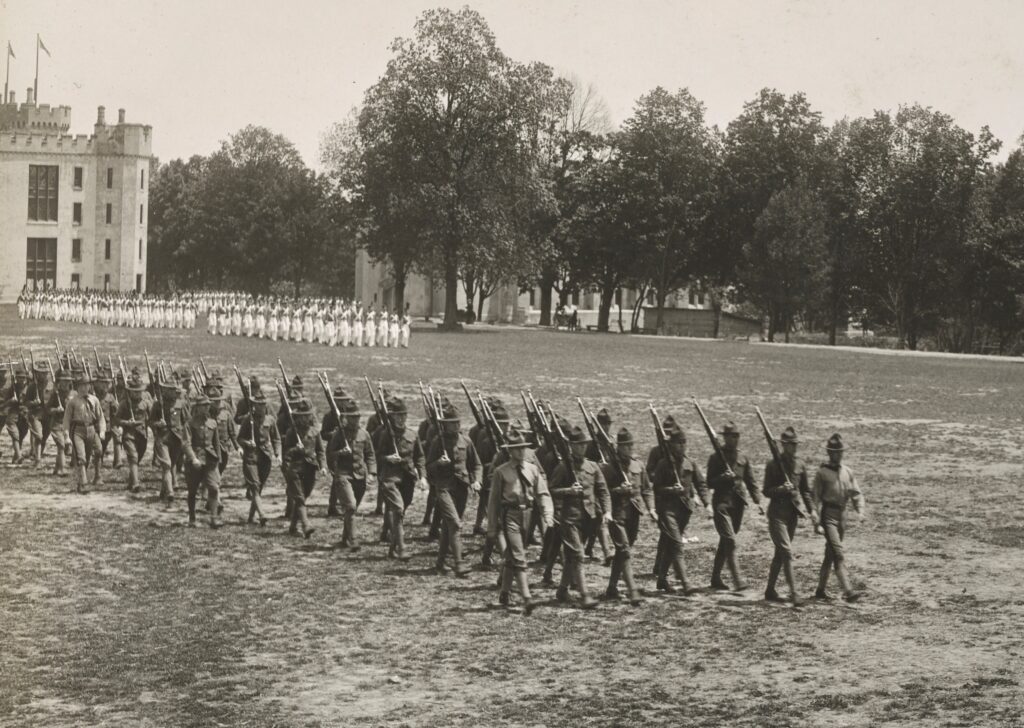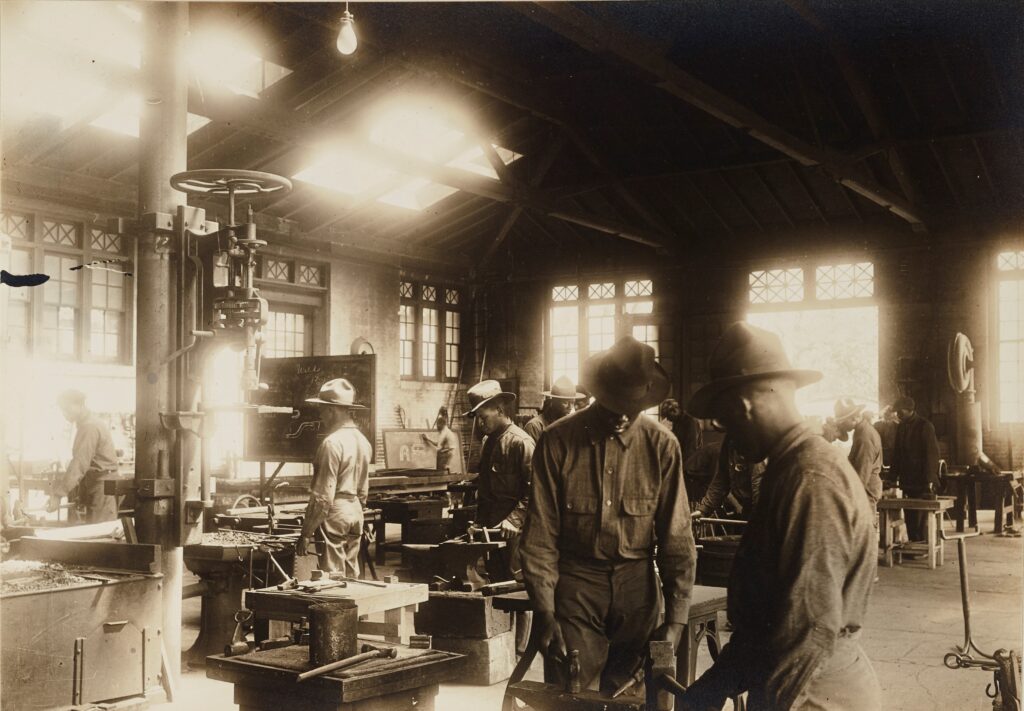With the signing of the Armistice on November 11, 1918, the CEST began the process of demobilizing the SATC. By December 21, 1918, all soldiers and officers of the SATC were either transferred or discharged.1 After action reports written by the CEST and J.H. Wigmore, who served on the CEST, paint the SATC in a positive light. However, the SATC had plenty of negative effects.
Logistical, Administrative, and Training Problems
First and foremost, the lack of support from the CEST and the War Department led to many logistical, administrative, and training problems for SATC units. Proper equipment and materials necessary for military training were not provided in a timely fashion. The emphasis on Army procedure and lack of administrative direction led to delays in inductions. Additionally, the lack of standardization of military and academic instruction resulted in soldiers being trained in outdated, antiquated methods of combat and lack luster academic performance. Had the war continued into 1919, it is highly possible that the quality of officers from SATC units would have been a detriment to the war effort.

Financial Impact
Second, the CEST’s lack of awareness for the financial impact of the SATC almost led VMI to disaster. The War Department provided all necessary equipment, uniforms, and other materials for SATC units. However, the constant transfer of men from VMI resulted in lost tuition money which caused unnecessary financial strain on the institution. Rather than having a plan to cover the loss of tuition funds for VMI, the War Department continued transferring men and let one of their greatest assets in the SATC program slowly slip towards financial ruin.

Race & Class
Finally, while the CEST and the War Department claimed after the war that the SATC was open to all regardless of race or class, their actions during the war proved otherwise. The possibility of moving from a vocational B Section to a collegiate A Section was nearly impossible given the academic requirements. Additionally, the white supremacist attitudes of the War Department limited the number of HBCUs that had SATC units which in turn kept many African American men who might have made excellent officers from joining the collegiate A Sections.

Overall, the SATC program was a moderate success for the CEST and the War Department. When the program worked as intended, such as at VMI and Hampton, it provided an essential reserve of trained men for the war effort. However, the mismanagement of the SATC by the CEST and the War Department hindered the program’s effectiveness even at the most successful institutions in Virginia.
Notes:
- The Advisory Board, Committee on Education and Special Training. A Review of Its Works during 1918, 33.
- Harry Downing Temple, The Bugle’s Echo: A Chronology of Cadet Life at the Military College at Blacksburg, Virginia, The Virginia Polytechnic Institute, vol. III (1912-1920) (Blacksburg, VA: The Virginia Tech Corps of Cadets, Inc., 1998), 2150.